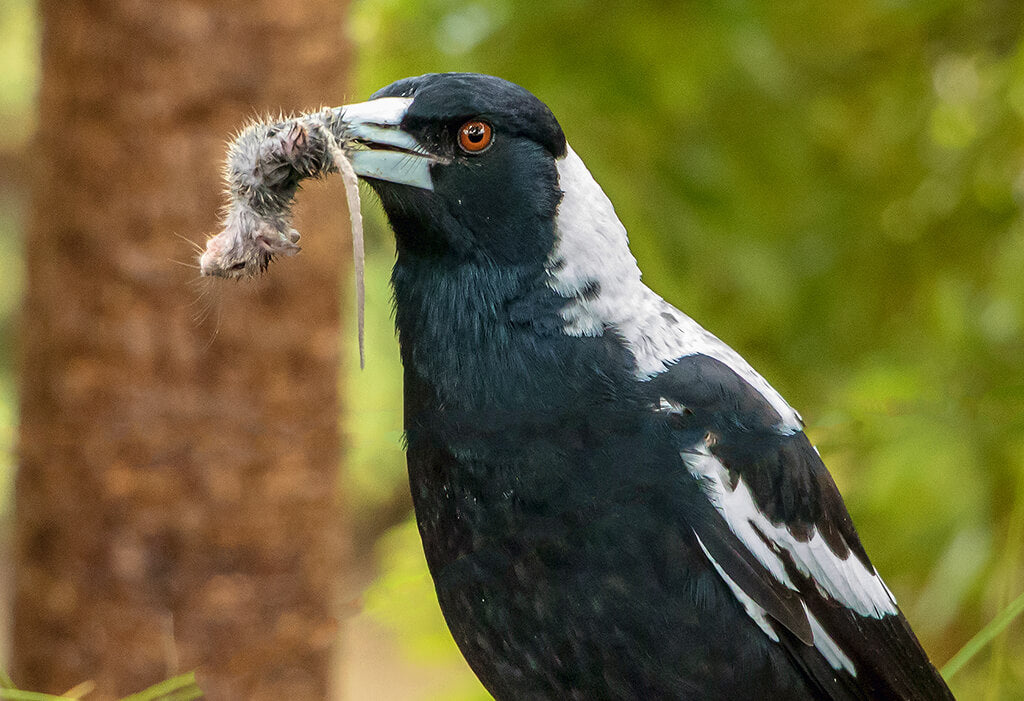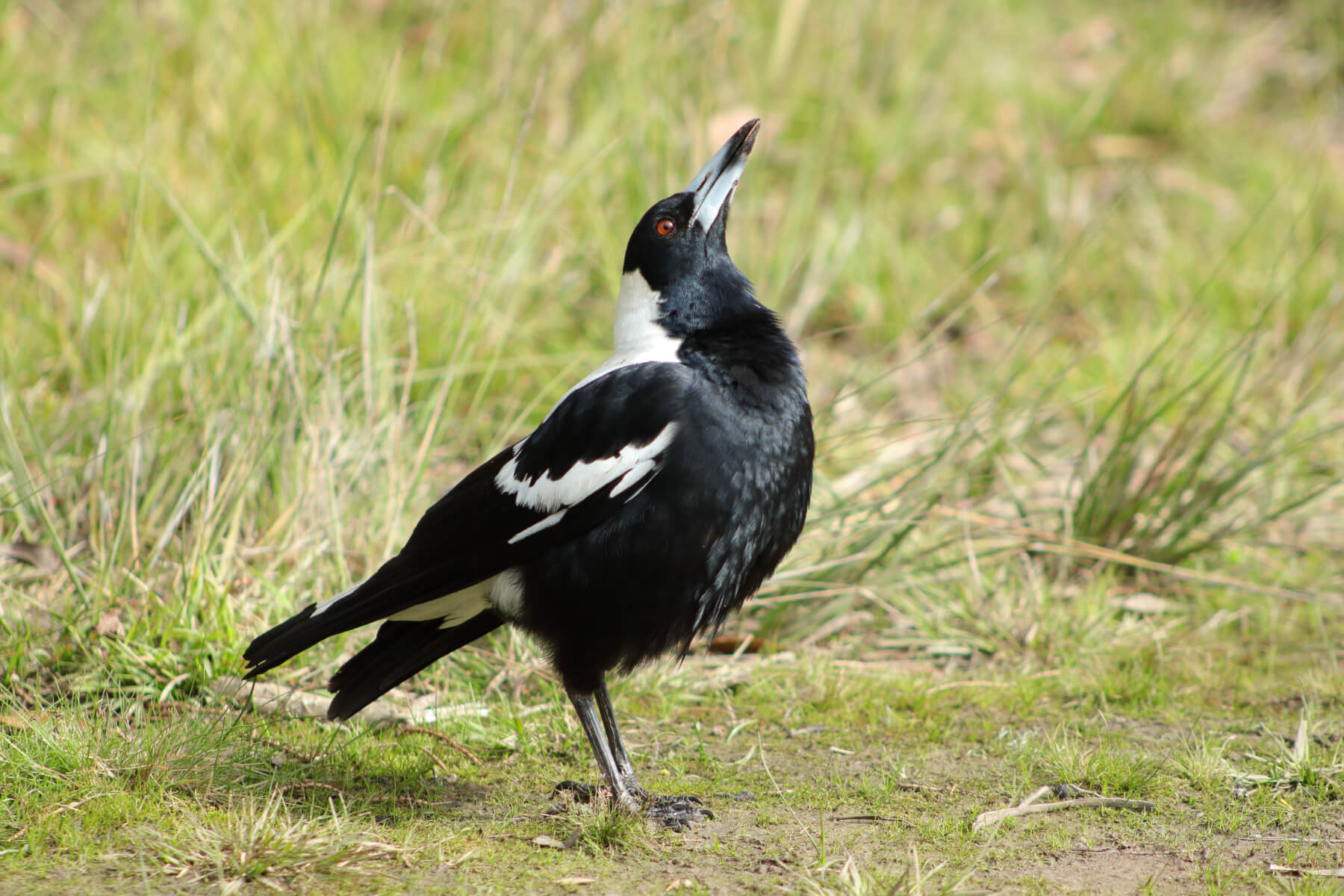Recognising Magpie Gender: Determining Whether a Bird is Male or Female
Posted by The Magpie Whisperer on

How to Distinguish the Gender of an Adult Magpie
In most cases, it can be quite simple to distinguish the gender of an adult magpie. They have obvious visual differences between males and females, including variations in size and coloration. Males are typically larger than females and have longer beaks, while females are usually smaller with shorter beaks.
The physical traits that allow for identification of the gender of adult White-backed magpies are located on their napes and mantles which are key areas to observe in the White-backed magpie.
- Males will have a nape that is snow-white in color.
- Females will typically have a motley pattern of gray shades and markings.
Black-backed magpie

Sex can be determined by looking at the coloration of the nape.
Can You Identify the Gender of a Baby or Juvenile Magpie?
 The physical characteristics of a juvenile magpie can be misleading when it comes to identifying its gender. For example, many people assume that a young magpie with mottled grey feathers on its nape and mantle is automatically female. However, this statement is not necessarily true, as juvenile males can also have these markings. (Please refer to the graphic by clicking here to enlarge it.)
The physical characteristics of a juvenile magpie can be misleading when it comes to identifying its gender. For example, many people assume that a young magpie with mottled grey feathers on its nape and mantle is automatically female. However, this statement is not necessarily true, as juvenile males can also have these markings. (Please refer to the graphic by clicking here to enlarge it.).
It is only after the bird has developed its adult plumage, which can take up to 2-3 years, that its gender can be accurately determined.
Magpies May Exhibit Sex Differences as Early as Three Months of Age
According to Gisela Kaplan's book "The Australian Magpie - Biology and Behaviour of an Unusual Songbird," sex differences may start to emerge after just three months of the bird's life. The beak and weight of the magpie can vary between male and female individuals, and this may be used as a basis for sex identification.
Moulting Process in Juvenile Magpies
Magpies go through an annual moulting process where they shed their old feathers and replace them with new ones. This process occurs gradually, and it can take up to 2-3 years for a magpie to fully develop its adult plumage.
During this time, the bird's physical appearance will change as it gradually develops the features that distinguish male and female adults.
By the age of 2-3 years, most magpies will have shed their juvenile plumage and developed the clear physical characteristics that can help identify their gender.
These distinguishing features can include beak size, weight differences, and the coloration and markings on the bird's feathers.
Female photo by Toby Hudson [CC BY-SA 3.0], via Wikimedia Commons
Male photo by picman2, via Pixabay



